To begin at the beginning high on a hill overlooking the city – Park Hill.
Park Hill was previously the site of back-to-back housing, a mixture of two and three storey tenement buildings, waste ground, quarries and steep alleyways. Clearance of the area began during the 1930s.
Following the war it was decided that a radical scheme needed to be introduced to deal with rehousing the Park Hill community. Inspired by Le Corbusier’s Unité d’Habitation architects Jack Lynn and Ivor Smith under the supervision of J. L. Womersley, Sheffield Council’s City Architect, began work in 1953 designing the Park Hill Flats.
Construction began in 1957 – officially opened on 16 June 1961.
The complex remained structurally sound, unlike many system-built blocks of the era, and controversially was Grade II* listed in 1998 making it the largest listed building in Europe.
A part-privatisation scheme by the developer Urban Splash in partnership with English Heritage to turn the flats into upmarket apartments, business units and social housing is now underway.
Plan for Sheffield 1963
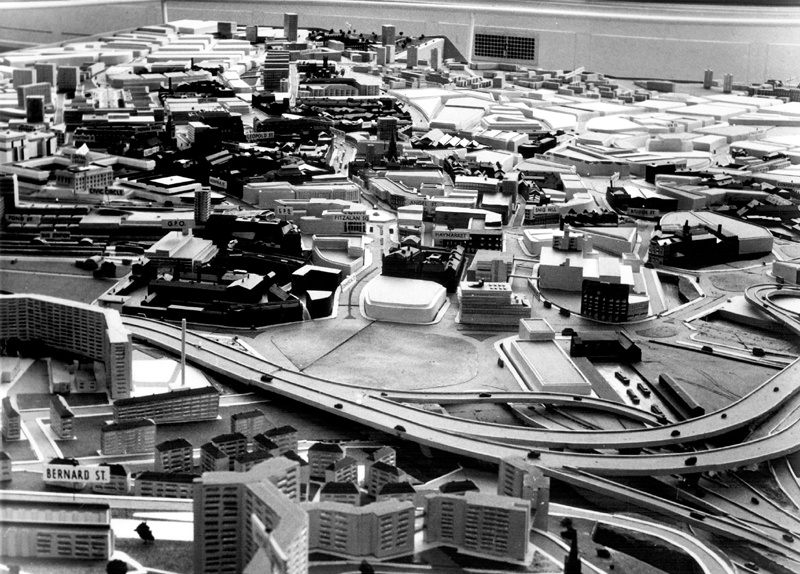
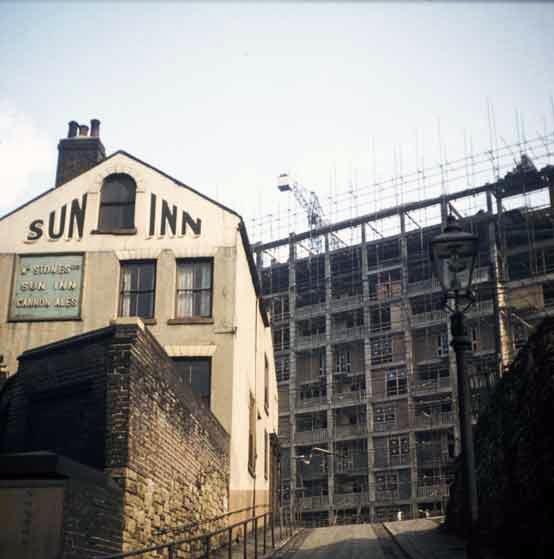

I’ve been here before and again, visited pubs that don’t exist – The Parkway, Scottish Queen, Link or Earl George are all long gone.

Let’s go down town.
Take a look at Elements Fire Steel Brian Asquith’s work unveiled on May 10th 1965 at the former Westminster Bank – subsequently sited here on the Sheffield Hallam campus. He was also responsible for the sculptural work in the Peace Gardens.

Onwards to the Co-op’s former Castle House Store.
Grade II Iisted Co-operative department store described by Historic England as ‘1964 by George S Hay, Chief Architect for CWS, with interior design by Stanley Layland, interior designer for CWS. Reinforced concrete with Blue Pearl granite tiles and veneers, grey granite tiles and veneers, buff granite blocks, glass, and brick.’
The original branch was destroyed in the Blitz, to be replaced by a temporary prefabricated shop.

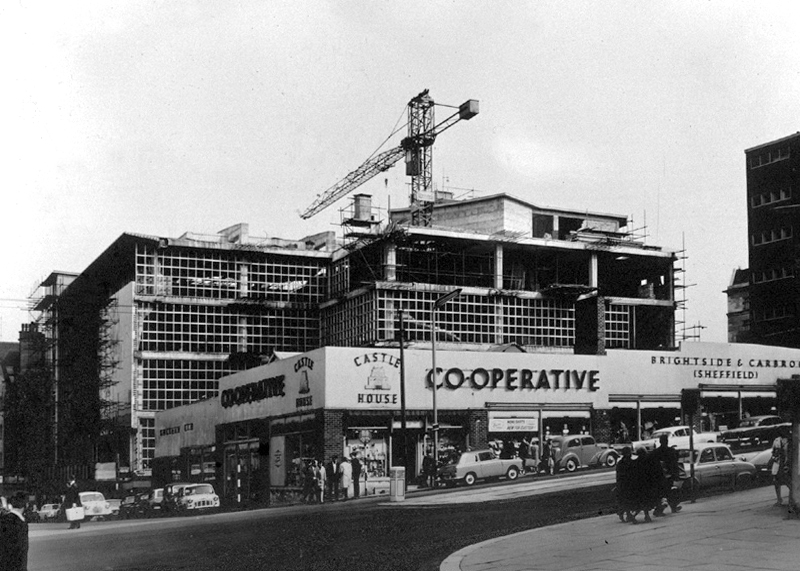
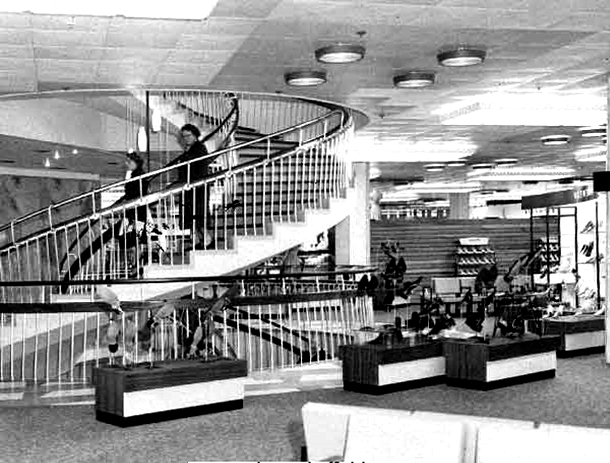

Seen here in Sean Madner’s wonderful photographs.

Vulcan by Boris Tietze commisioned by Horne Brothers 1961 for their head office building No. 1 King Street. Glass fibre on a metal armature the 8 foot high figure holding a bundle of metal rods.
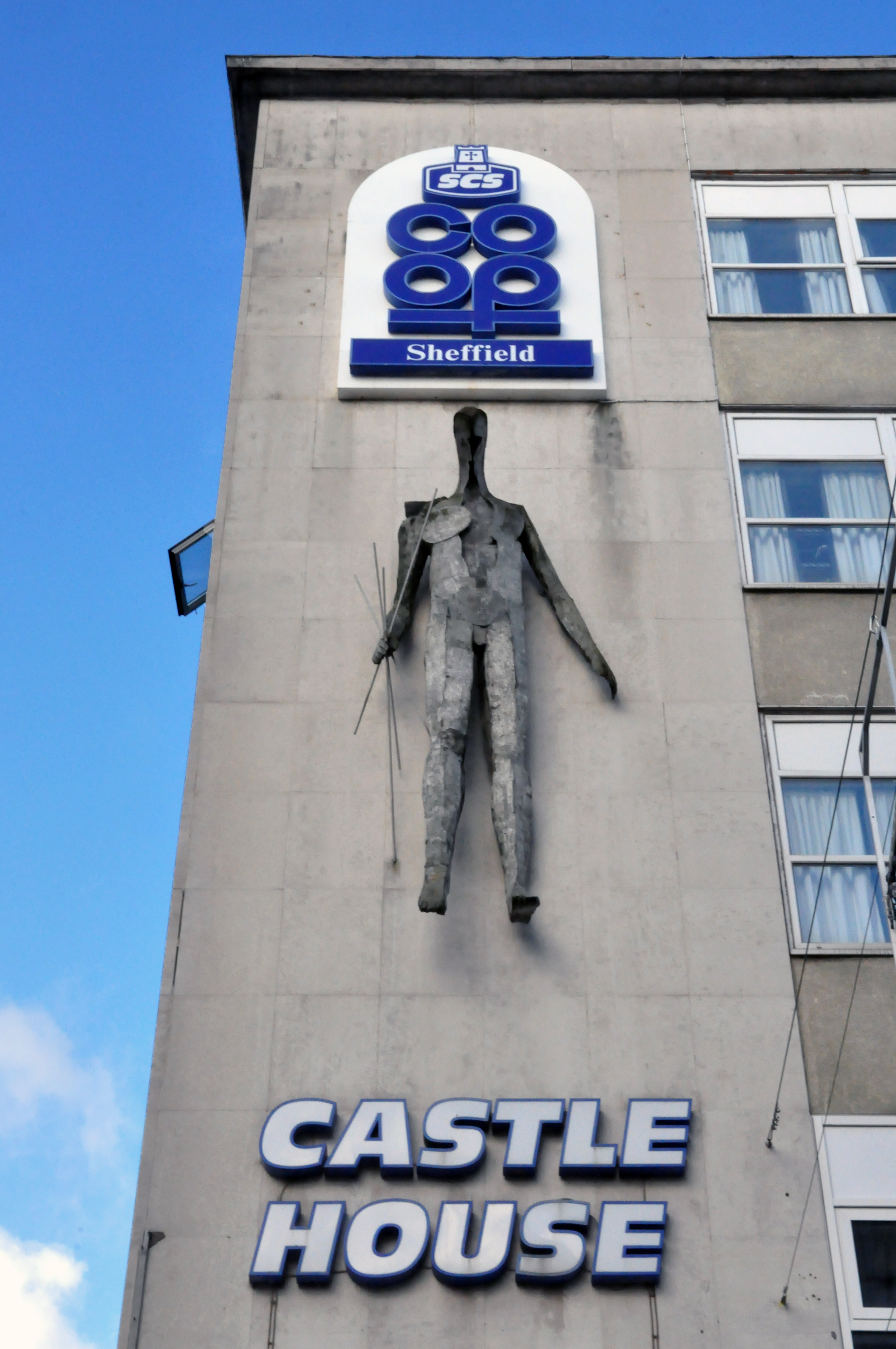
Off to court – Sheffield Magistrates Courts of 1978 designed by B Warren City Planning Officer and Architect, along with the adjacent Police Headquarters of 1970. Described by the Pevsner guide as – coherent in design if not particularly loveable.
Under construction 1977

1989

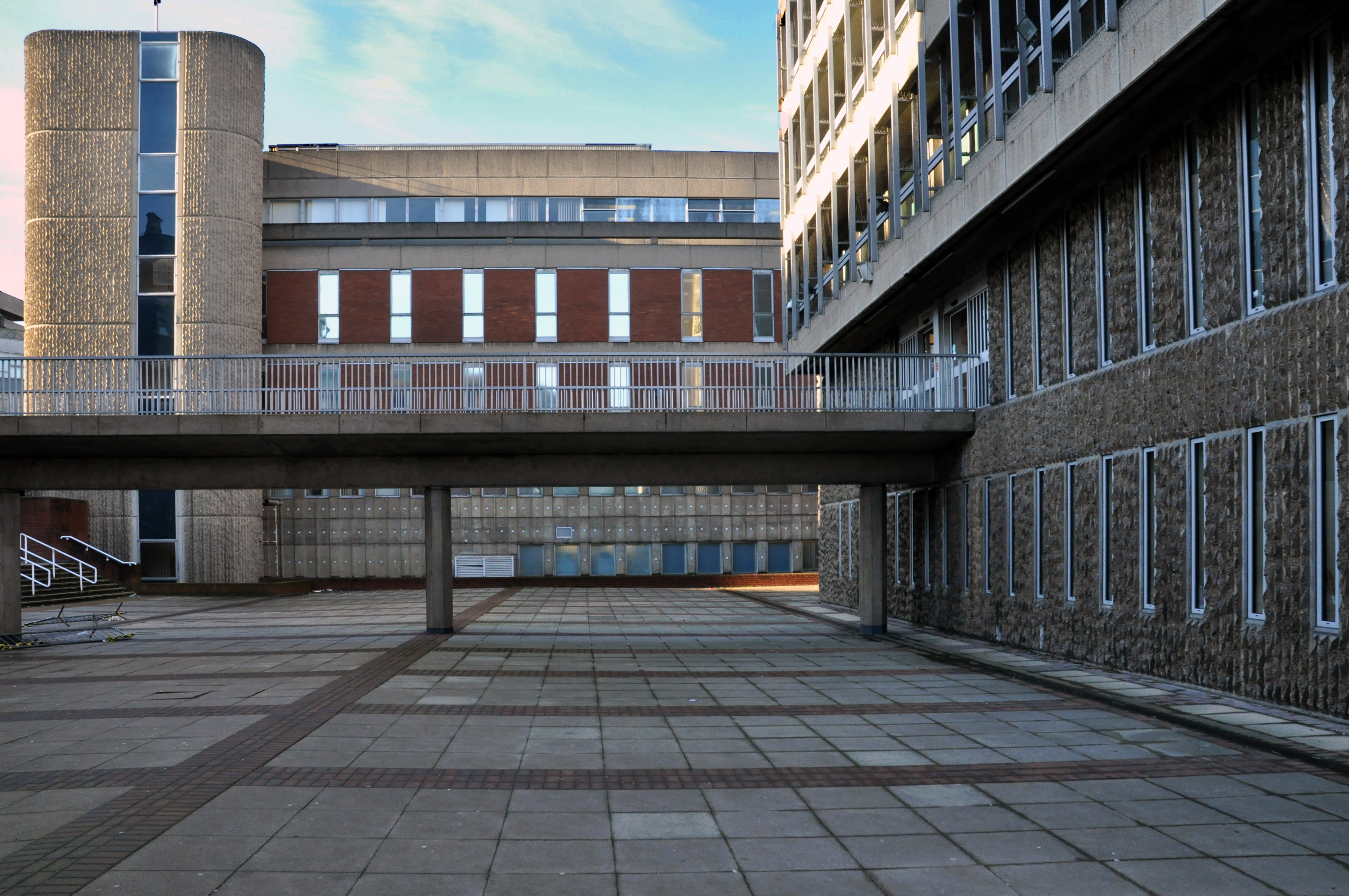

Passing the Graves by City Architect WG Davies 1929-34, with a friendly nod to inter-war Modernity. Intended to form one side of an unrealised civic square proposed by Patrick Abercrombie in 1924. The exterior carved work is by Alfred and William Tory.
Visualisation by Geo Daniels

There were major exhibitions in both 1945 and 1963 illustrating the plans down up for the redevelopment of the city.
1945

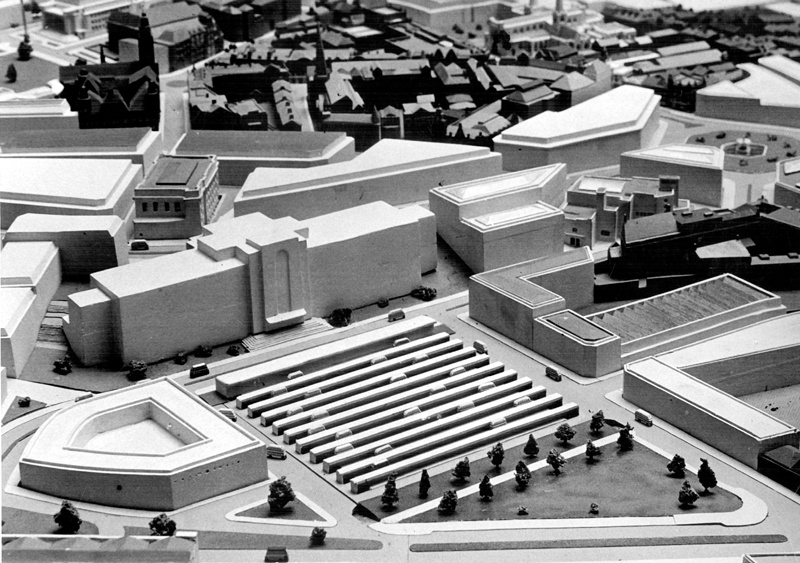
1963
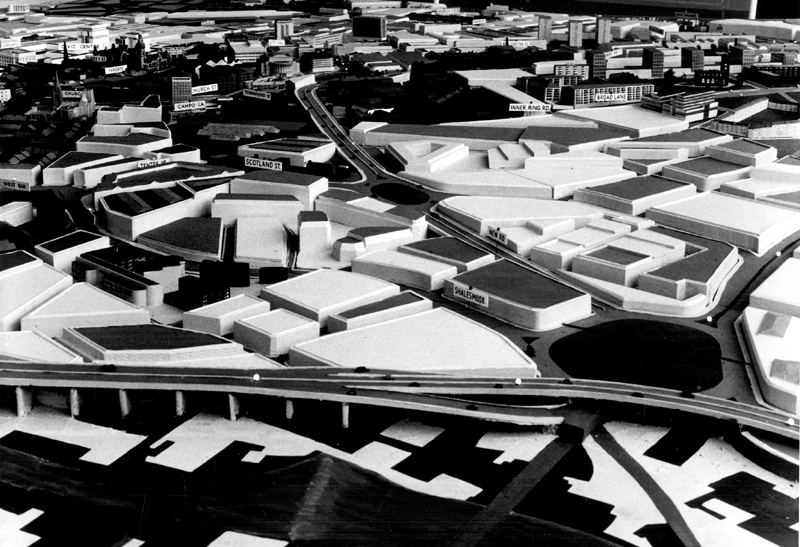
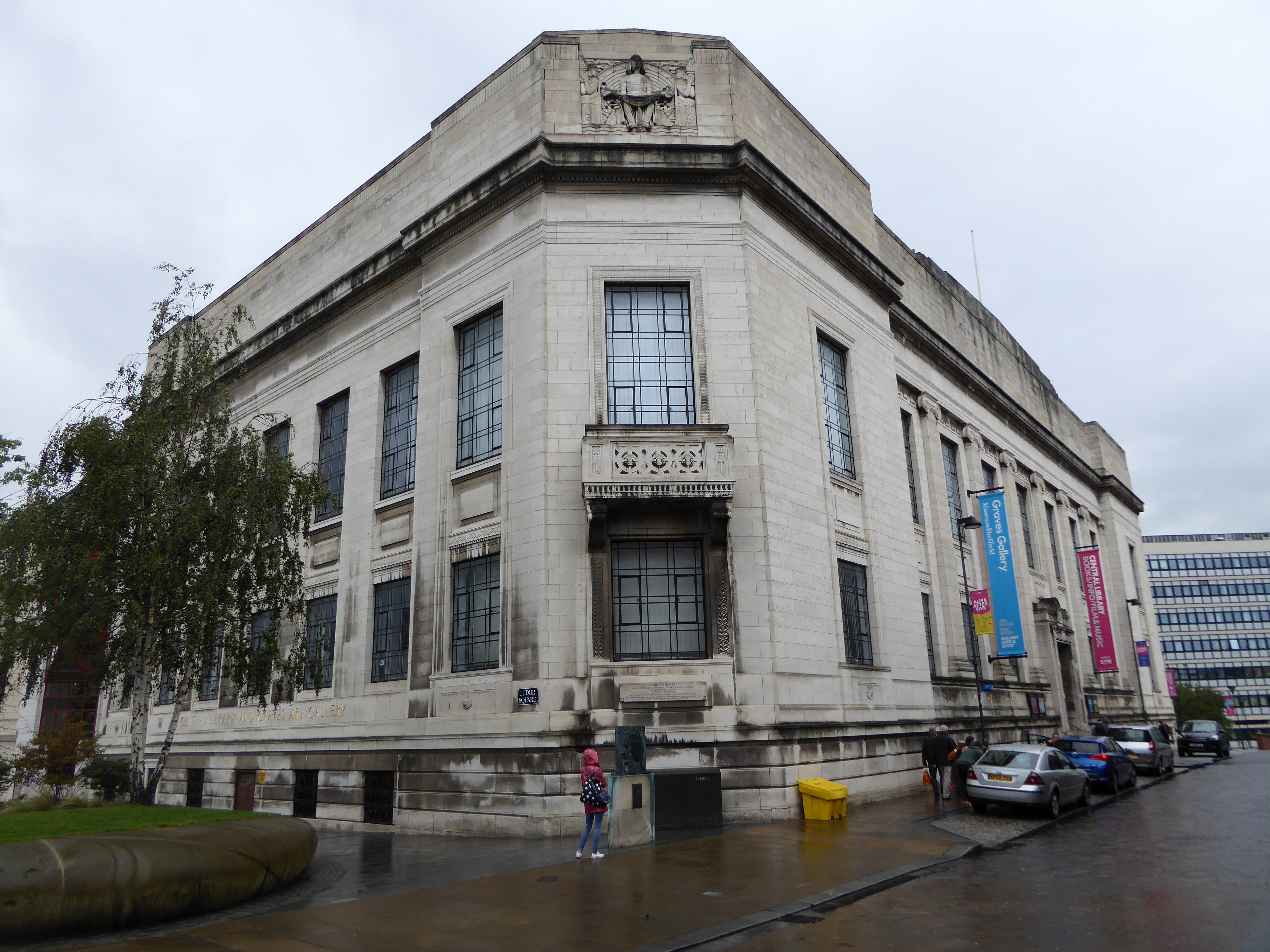

Off to the shops and the former Cole Brothers Stores by York, Rosenberg and Mardall, clad in their trademark white tiles opened in September 1963 – currently trading as John Lewis.

1969

Tucked around the corner my go to guy for up to the minute cast concrete public art William Mitchell.

Along The Moor to the Moorfoot Building of 1978 by the Property Services Agency, former Manpower Services Commission HQ – now home to council offices.
Under construction 1977

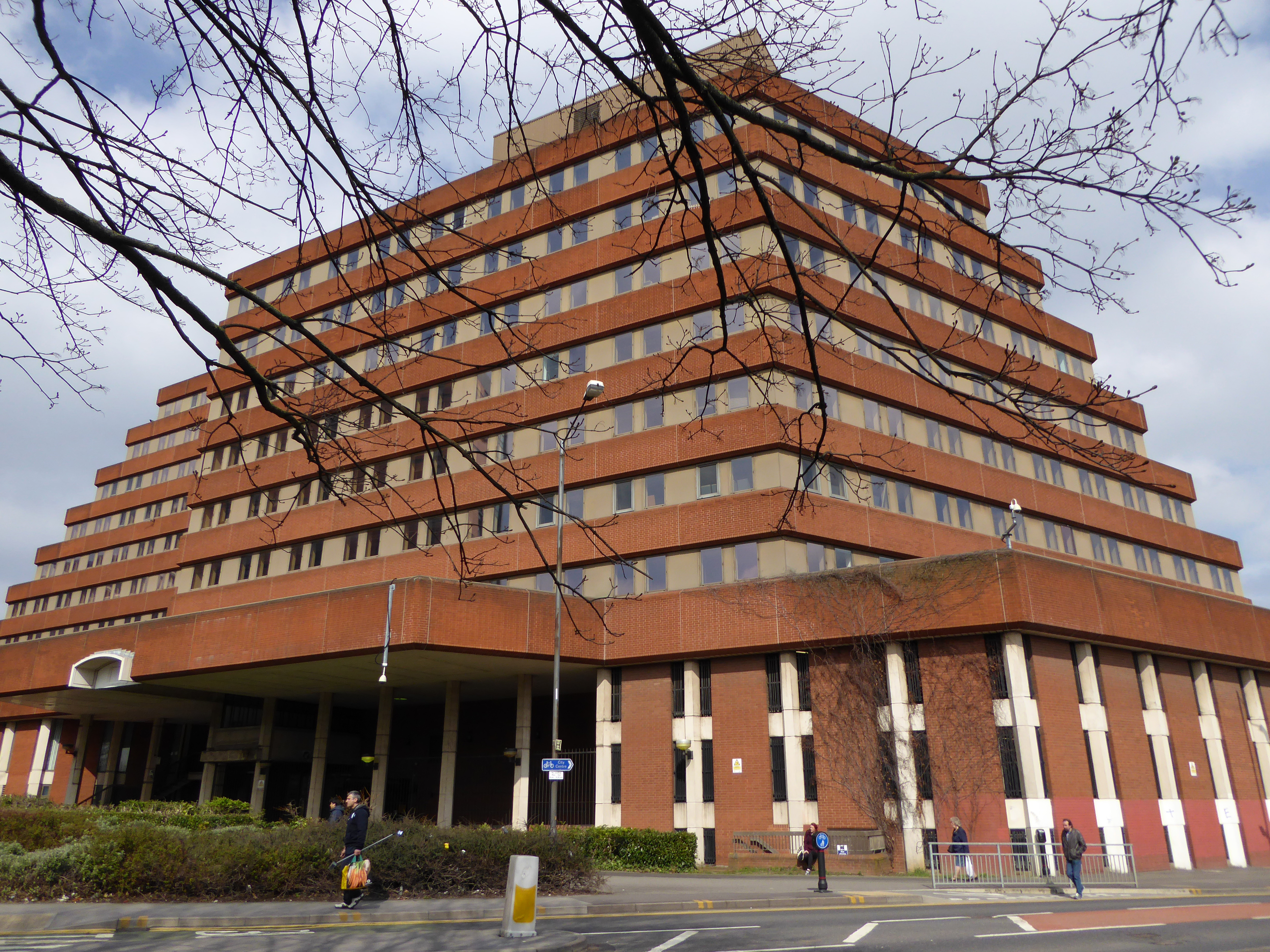
Crucible by Judith Bluck located outside the Manpower Service Commission Building, commissioned for the Property Services Agency of the Department of the Environment in 1979. It is a large bronze-coloured plastic fountain sculpture. The artist referred to it as an exploding crucible.

Finishing up at the renowned Moore Street Power Station
Electricity substation. 1968 to designs by consulting architects Jefferson, Sheard and Partners, Sheffield, led by Bryan Jefferson, in association with the Regional Civil Engineers’ Department of the CEGB North East Region. Contractors, Longden & Sons Ltd, Sheffield. Reinforced concrete frame with board-marked finish with formwork bolt marks, construction and daywork joints emphasized, concrete floor slabs, blue engineering facing bricks, cladding panels of Cornish granite aggregate.




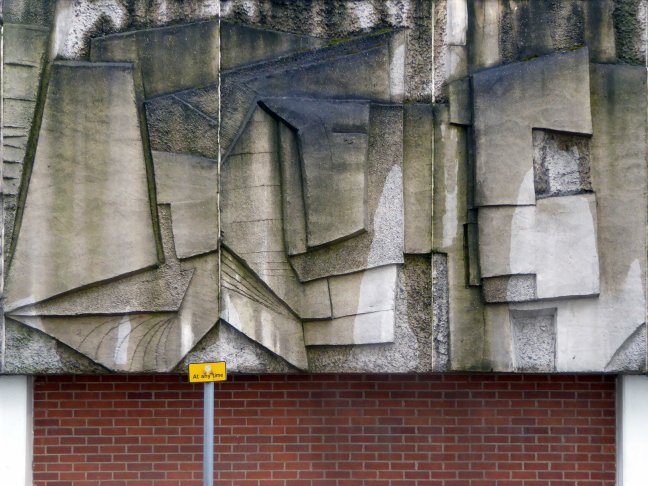
Great to see these bits of Sheffield through your eyes and if you are interested there are a couple of related links below that may be of interest to you.
Castle House Board Room (With links to lots of other inside shots of Castle House):
A bunch of photographs of outside and inside Moor Street Substation:
https://postcardcafe.wordpress.com/?s=Moor+Street+Substation
Best wishes
Mr C 🙂
LikeLike
Thanks ever so – I’m taking gang of folks around town this Sunday meeting 11.00 at the “new” café on Park Hill this is our route, hopefully getting into Castle House.
LikeLike
Hello Steve,
At Stockport, rail disruption with no rail replacement buses and an hour until the next Sheffield connection from Manchester. Gutted. See you on the next one!
Josh
LikeLike
Thank you for this wonderful introduction to modern Sheffield. I’m planning a little day trip sometime soon so now I’m got a prefect guide on where to go and what to snap.
Si
LikeLike
Hi, thanks so much for posting these! Brings back so many memories of a city I truly loved. The pic of ‘Coles Corner’ really stirs the imagination… had my first date with a chap called Adi at the Gaumont Cinema just next door. Can even remember the film we saw – Amadeus. Sadly the cinema is now long gone, and so is Adi! There was also a little cafe called Piccolo’s just across the road from here… a glorified greasy spoon where the great and the good of Sheff’s music scene used to assemble. We regularly rubbed shoulders with the likes of Pulp and Treebound Story, and shared a frothy coffee or two! I haven’t scrolled through everything, but I wonder if you have included ‘the hole in the road’ in your collection? It was as the name suggests; an underground pedestrianised walkway and a hole in the road, distinguished by its rather impressive fish tank built into the wall. Scrolling down I noticed you had a portrait of George Best, sprawled on the bonnet of a car. I wonder if you’ve come across any pics of his house in Bramhall Cheshire? Considered the height of modernity when it was built. I grew up in the village and remember making many pilgrimages there as a child! Really interesting selection. Thank u again!
LikeLike
Thanks Rachael – the walk did mention the hole in the road but I haven’t included it here. I live in Stockport, so have visited the Bramhall house now much changed – and researched the archive photographs.
LikeLike